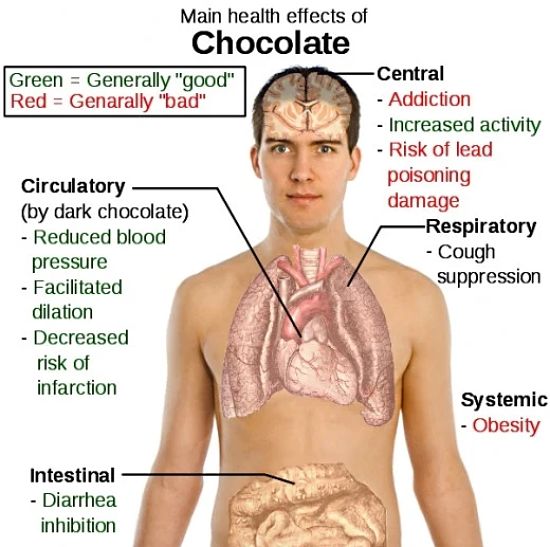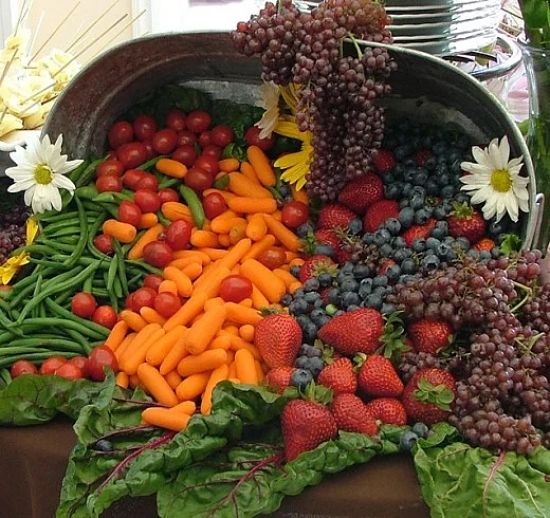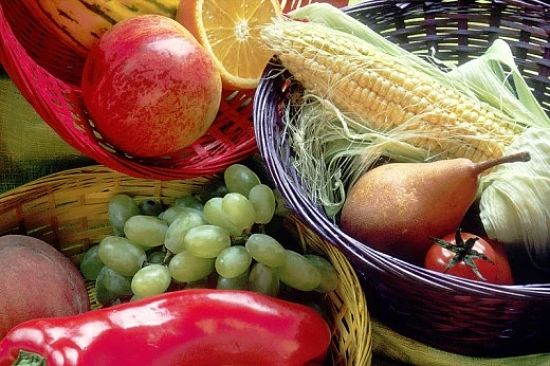Foods Naturally High in Flavonoids Better Than Bioflavonoid Supplements
The health benefits of dietary flavonoids are being promoted as one of the major reason for consuming a complex array of fruits and vegetables. Biofavonoids are also found in tea and cocoa and there are many herbs that rich natural sources of flavonoids. The health benefits of flavonoids are:
► antioxidative activity in scavenging for free-radicals and boosting the immune system
► aiding in the prevention of coronary heart disease
► anticancer activity.
However there is growing concern that significant amounts of flavonoids in foods may be lost during food storage and processing and cooking. Flavonoids are also transformed during processing and cooking and this can affect their bioavailability and activity.
This has lead to recommendations that flavonoids be taken as a supplement rather than relying on natural dietary sources.
Which is better a diet with a variety of fruits and vegetables or dietary supplements?



Foods rich in Flavonoids
Vegetables and fruit and are important sources of dietary flavonoids, as well as a variety of teas, wines and herbs. However the individual intake of flavonoids varies considerably with the diet consumed. The listing below shows food which have high natural levels of flavonoids
- Adzuki bean
- Asparagus
- Basil
- Brussels sprouts
- Cabbage
- Cayenne pepper
- Coriander
- Cranberry
- Dill
- Fennel
- Garden pea
- Garlic
- Green Tea
- Kale
- Kidney bean
- Kohlrabi
- Lettuce
- Lima bean
- Onion
- Peppermint
- Red and White Wines
- Scarlet runner bean
- Soy
- Spinach
- Tea
- Thyme
The type of flavonoids present in food also varies considerably. The table below compares the flavonoids found in many common foods.
The key points are:
► Dark chocolate is richer in flavonoids than milk chocolate
► Fruit and fruit juice are rich on flavonoids, but the type present varies
► Tofu and other soy products are rich in Isoflavones
► Green tea has much higher levels than black tea
► Red wine has much higher levels than white wine but the amount varies considerably for individual wines.
Comparison of Flavonoids in Various Foods
|
Flavonoid and tannin content mg per serving
|
Flavan-3-ols
|
Flavonols
|
Proantho-cyanidins
|
Antho-cyanidins
|
Thearubigins
|
|---|---|---|---|---|---|
|
Apple, with peel
|
13
|
6
|
147
|
||
|
Blueberries
|
1
|
3
|
131
|
82
|
|
|
Broccoli, raw
|
0
|
3
|
|||
|
Chocolate, dark
|
24
|
165
|
|||
|
Chocolate, milk
|
6
|
88
|
|||
|
Cranberry juice cocktail
|
0.1
|
3
|
42
|
||
|
Orange juice
|
28
|
0.1
|
|||
|
Tofu
|
Isoflavones 334
|
||||
|
Tea, black, brewed
|
6
|
10
|
116
|
||
|
Tea, green, brewed
|
304
|
12
|
3
|
3
|
|
|
Wine, red
|
10-20
|
10
|
77 - 103
|
9 - 40
|
|
|
Wine, white
|
2 - 3
|
2 - 3
|
Effects of Food Processing and Storage on Flavonoids
Food processing can affect the levels of dietary flavonoids in foods in a number of ways:
► Transformation - Black and oolong teas undergo dramatic changes when the teas are prepared. (see the Table below) The level of flavan-3-ols decreases, with a corresponding increase in the concentration of thearubigins. The total level of another type, the flavanols, remains relatively low and doesn't change much during conversion of green tea leaves into black or oolong teas. The theaflavins levels also remain substantially unchanged. It appears that these changes, and the transformations that occur during storage and cooking of foods, are due to the oxidative processes that change the form of flavonoids in the foods.
► Decaffeination and processing of teas into 'instant' varieties - Both of these processes decrease either flavanol or thearubigins levels or both (see the table below).
► Flavonoids also are susceptible to storage, food handling procedures and other processes. For example, one study has reported that 25-33% of quercetin in raw onions is lost during the first 12 days of storage, but levels remain relatively constant after that.
Comparison of flavonoids in various types and brews of teas
|
Total flavonols (mg/100 mL)
|
Total flavan-3-ols (mg/100 mL)
|
Thearubigins (mg/100 mL)
|
|
|---|---|---|---|
|
Green, brewed
|
5.2
|
132.1
|
1.1
|
|
Black, brewed
|
3.9
|
34.3
|
73.4
|
|
Green, brewed, decaffeinated
|
4.8
|
55.8
|
8.8
|
|
Black, brewed, decaffeinated
|
4.4
|
2.7
|
49
|
|
Oolong, brewed
|
2.7
|
51.6
|
|
|
Black, ready-to-drink
|
2.3
|
2.1
|
25.5
|
|
Black, instant
|
1.4
|
2
|
23.7
|
Effects of Cooking on Flavonoids
When foods are cooked in water, and cell walls are disrupted, there can be a substantial reduction in flavonoids, which are soluble and simply leak into the cooking water. However the quercetin in onions is quite stable to high temperatures and remains unaffected by boiling or stir-frying. It appears that the enzymatic transformations between forms of flavonoids are more than the effect of cooking processes themselves.
► A detailed research study showed that the retention rates for flavonoids for a wide range of vegetables varies considerably:
- Frying - 55% to 116%
- Boiling - 34% to 108%
- Stewing - 32% to 100%
- Microwave cooking - 43% to 110%
- Loss of flavonoids to the cooking water ranged from 1% to 56%.
Microwave Cooking - A research study has highlighted the dramatic effect of microwave cooking on antioxidant flavonoids in broccoli. However this appears to be the exception rather than the rule. Green leafy vegetables appear to be most at risk. The table below summarizes the losses of flavonoids for a range of cooking methods. Overall microwave cooking, steaming and stir-frying appears to retain most of the flavonoids in food. Using minimal water and reducing the cooking time lowers the loss rate for all cooking methods.
Flavanoids Lost from Foods for Various Cooking Methods
|
Favonoids Lost by various cooking methods
|
Microwaved
|
Boiled
|
Pressure Cooked
|
Baked
|
|---|---|---|---|---|
|
Broccoli
|
97%
|
66%
|
47%
|
|
|
Potatoes
|
45%
|
60%
|
100%
|
|
|
Tomatoes
|
65%
|
82%
|
Conclusion
Given the wide range of foods that have good levels of flavonoids, including most fruits and vegetables, as well as teas and cocoa, it would appear that supplements are not required. Some simple modification to cooking practices can help retain the flavonoids in foods.